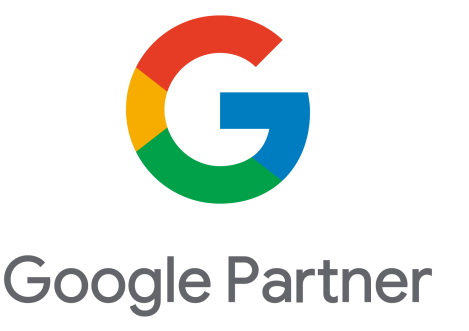How AI Search Expands — Not Replaces — SEO
This blog post was written by:
There’s been a lot of noise recently about AI “replacing” traditional SEO. Suddenly, instead of chasing rankings, we’re left wondering whether all that effort is obsolete. But in reality, early evidence suggests AI search (known as Generative Engine Optimisation, or GEO) doesn’t replace SEO — it extends the reach, value, and shape of how search works.
Let’s dive deeper…

Coexistence, not collision
Reality check: ChatGPT is not killing Google. In fact, studies show that the adoption of ChatGPT and other AI tools correlates with stable (or even slightly increased) use of Google Search. The hypothesis that users are simply substituting one for the other doesn’t hold up. Rather, it’s an expansion in how people look for information.
In other words: we’re not in a world where AI and SEO are adversaries. They’re different access points to information — and brands need to show up in both if they want to win.
GEO + SEO: Two sides of the same coin
First, let’s summarise the difference between SEO & GEO:
SEO (Search Engine Optimisation): aims to improve a website's ranking in traditional search engine results, prioritising factors like high-quality backlinks, technical site health and short-tail keywords.
GEO (Generative Engine Optimisation): focuses on ensuring content appears in AI-generated answers, emphasises content structure, clarity, and factual precision to be easily understood and cited by AI models.
Now we’ve summed up the differences, let’s explore the similarities and why trying to “kill off SEO” in favour of GEO could hurt your business:
- Trust, authority, and credibility still matter. AI models often select content to cite based on perceived authority, domain reputation, clarity, and originality. That’s long been the backbone of SEO.
- Contextual relevance and semantics remain central. GEO demands content be structured, context-aware, and rich enough for a model to “pull” meaningful segments. But good SEO has always rewarded those qualities (depth, topical coverage, internal linking).
- Zero-click does not mean zero value. As more searches end without a click (especially via AI Overviews or Modes), visibility becomes less about clicks and more about being
the reference. Measuring brand mentions, AI citations, sentiment, and how people invoke your content in conversation becomes as important as CTR.
- Overlap in discovery mechanisms. If AI draws from search indexes (or references search-derived sources), being organically visible still gives you a pathway into GEO. It’s not always an either/or scenario.
- Different intent, different tools. Some queries will, for years, remain navigational or transactional — better served via SERPs (search engine results pages). Others — exploratory, comparative, contextual — may default to generative answers. The brands that come out on top will be the brands that cater to both.
So, the goal shifts from “competing with AI” to “being favoured by AI.”
How to shift our thinking to ‘hybrid search’
To remain visible in a today’s (let’s face it, complex) search sphere, here are some key strategic actions to take:
- From keywords → topics / intent clusters
Instead of optimising isolated keywords, build content hubs that answer the full range of queries around a topic. This increases your chance of being cited in AI-generated summaries or sidebars. - Design for citation & extractability
Use clear headings, bullet points, featured snippets, short definitions, and summary boxes. Those structures make your content more “AI-friendly.” - Earn true authority
Run original research, gather data, publish case studies. These help models and users see you as a reliable, primary source. - Expand monitoring beyond clicks
Track how often your brand or content is mentioned in generative engines, not just how many visitors click through. Monitor sentiment, share of voice, and overall AI visibility. - Optimise structural and technical layers
Things like meta descriptions, structured data (schema), and canonical tags act like signposts, helping these systems quickly identify your content, know it’s trustworthy, and show it to the right audience. Think of it as giving your content a clear, organised map so AI can find and cite it correctly. - Iterate with AI feedback loops
Use AI tools to test which parts of your content are being cited or pulled, see where there’s overlap or gaps, and refine. Chris explores this further here - with guidance on the right prompts to use to find out what AI thinks of your business. - Be flexible with attribution
Accept that in AI-led responses, traditional last-click attribution is less reliable. Make room for hybrid attribution models (brand awareness, mention-based metrics, and assisted conversions).
Real-world thinking: how search might look today
Scenario A: A local service provider creates a well-structured guide (e.g. “How to choose a plumber”) with clearly labeled pros/cons, FAQs, and summary boxes. An AI engine may pull the summary box or bullet list, citing the brand — even if the user doesn’t click. That brand is now “present” in consciousness.
Scenario B: A blog on “solar panel ROI 2025” includes original benchmarking data. Because theirs is one of the few recent data-rich reports, AI models may favour citing it over older superficial articles — boosting their “citation authority.”
Scenario C: An SaaS client sees organic Google traffic dip slightly due to rising AI Overviews, but mentions of their brand (in AI responses) increase. They lean harder into brand-focused content, press, and content that displays “why us” rather than just “how to.” They preserve long-term visibility.
A new era of search
Generative search isn’t here to kill SEO — it’s here to expand how people search. Smart brands will treat SEO and GEO not as rivals, but as complementary paths to visibility. The metrics will evolve, the tools will evolve, but the core remains: be authoritative, be clear, be referenceable.
If any of this feels abstract or you’d like to see how it applies to your industry, we’d be glad to run a mini-audit, free of charge, to help guide you in getting ahead.
If you’re working with us, we want to ensure you’re not blindsided by changes in how people find answers — and that your content is ready for whatever “search” looks like tomorrow.
Find out more about Generative Engine Optimisation (GEO) and how it’s shaping the future of search.
We think you'll also like...






